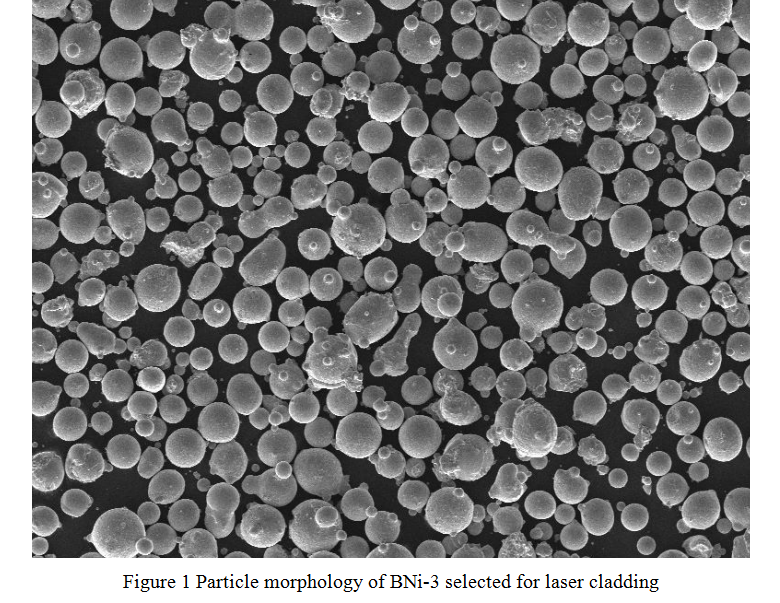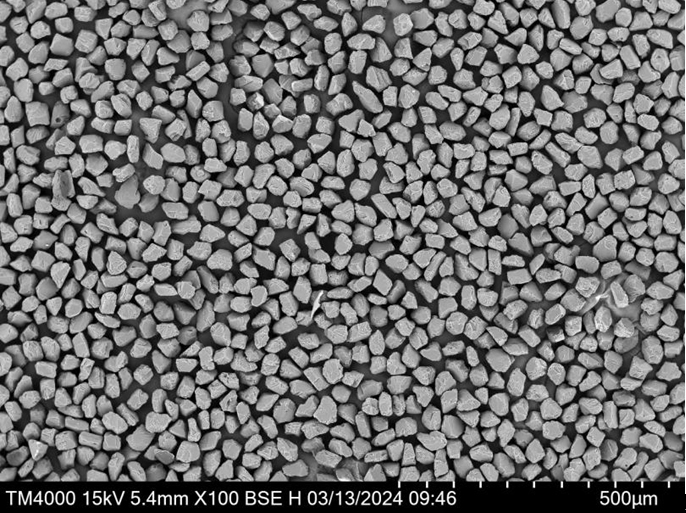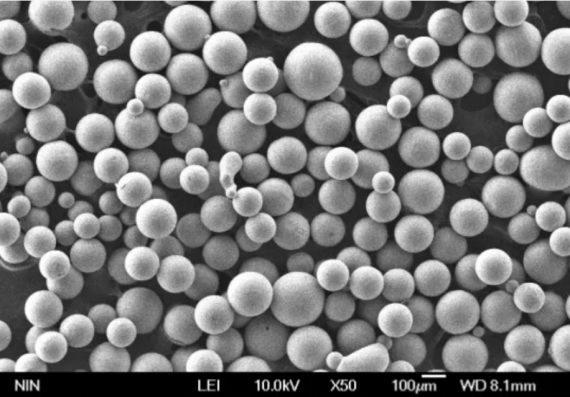FeCoNiCrAl-Pulver-klingt komplex, nicht wahr? Es ist einer der aufsteigenden Sterne in der modernen Metallurgie und Werkstoffkunde. Diese vielseitige Legierung gehört zu einer Gruppe, die als hochentrope Legierungen (HEAs) bekannt ist und für ihre bemerkenswerten mechanischen Eigenschaften und ihre Stabilität unter extremen Bedingungen bekannt ist. Aber warum erregt sie so viel Aufmerksamkeit? Lassen Sie uns dieses faszinierende Material, seine einzigartigen Eigenschaften und seine Anwendungen genauer unter die Lupe nehmen.
Überblick über FeCoNiCrAl-Pulver
FeCoNiCrAl-Pulver ist eine hochentropische Legierung, die hauptsächlich aus Eisen (Fe), Kobalt (Co), Nickel (Ni), Chrom (Cr) und Aluminium (Al) besteht. Diese Legierungen sind besonders, weil sie mehrere Hauptelemente in nahezu gleichen Anteilen enthalten, was zu einer Reihe faszinierender Eigenschaften wie hohe Festigkeit, Korrosionsbeständigkeit und thermische Stabilität führt.
| Wesentliche Merkmale | Einzelheiten |
|---|---|
| Zusammensetzung | Eisen (Fe), Kobalt (Co), Nickel (Ni), Chrom (Cr), Aluminium (Al) |
| Wesentliche Merkmale | Hohe Festigkeit, Korrosionsbeständigkeit, thermische Stabilität, Duktilität |
| Anwendungen | Luft- und Raumfahrt, Automobilindustrie, Energie, Biomedizin und additive Fertigung |
| Alleinstellungsmerkmal | Außergewöhnliche Eigenschaften, die sich aus entropiegetriebener Stabilität ergeben |

Zusammensetzung der FeCoNiCrAl-Pulver
Hochentrope Legierungen wie FeCoNiCrAl beruhen auf dem Konzept der Entropiestabilisierung. Durch das Mischen mehrerer Metalle in nahezu gleichen Anteilen bilden sie einen einphasigen Mischkristall, anstatt sich in getrennte Phasen zu entmischen. Hier ist eine Aufschlüsselung:
| Element | Rolle |
|---|---|
| Eisen (Fe) | Verbessert die Festigkeit und Haltbarkeit |
| Kobalt (Co) | Bietet magnetische Eigenschaften und Temperaturstabilität |
| Nickel (Ni) | Erhöht die Zähigkeit und Korrosionsbeständigkeit |
| Chrom (Cr) | Verbessert die Korrosions- und Oxidationsbeständigkeit |
| Aluminium (Al) | Trägt zur Oxidationsbeständigkeit und zu leichten Eigenschaften bei |
Durch diese spezielle Mischung entsteht eine harmonische Legierung mit ausgewogenen mechanischen, thermischen und chemischen Eigenschaften.
Eigenschaften von FeCoNiCrAl-Pulver
Was macht FeCoNiCrAl-Pulver so besonders? Es ist nicht einfach nur eine weitere Legierung - es ist ein Wendepunkt für Materialien in extremen Umgebungen. Lassen Sie uns seine herausragenden Eigenschaften hervorheben.
| Charakteristisch | Beschreibung |
|---|---|
| Hohe Festigkeit | Stärker als herkömmliche Legierungen und in der Lage, hohen mechanischen Belastungen standzuhalten. |
| Thermische Stabilität | Bewahrt die strukturelle Integrität bei hohen Temperaturen. |
| Korrosionsbeständigkeit | Ausgezeichnete Beständigkeit gegen oxidierende und korrosive Umgebungen. |
| Duktilität | Bietet Flexibilität und verringert das Risiko von Sprödbrüchen. |
| Leichtgewicht | Leichter als viele herkömmliche Legierungen, was den Energieverbrauch in Anwendungen wie der Luft- und Raumfahrt reduziert. |
| Verschleißfestigkeit | Widersteht Reibung und mechanischem Verschleiß besser als viele herkömmliche Legierungen. |
Arten von FeCoNiCrAl-Pulvern
Hier wird es noch interessanter. FeCoNiCrAl-Pulver gibt es in verschiedenen Qualitäten, die auf bestimmte Anwendungen zugeschnitten sind. Nachfolgend finden Sie eine Liste von mindestens zehn spezifischen Modellen, in der ihre besonderen Merkmale hervorgehoben werden.
| Modell | Einzigartige Merkmale |
|---|---|
| FeCoNiCrAl-1 | Universell einsetzbare Sorte mit ausgewogenen mechanischen Eigenschaften. |
| FeCoNiCrAl-2 | Verbesserte Korrosionsbeständigkeit, ideal für Meeresumgebungen. |
| FeCoNiCrAl-Ti | Enthält Titan für erhöhte Zähigkeit und Verschleißfestigkeit. |
| FeCoNiCrAl-Nb | Enthält Niob für hervorragende Leistung bei hohen Temperaturen. |
| FeCoNiCrAl-Cu | Kupferzusatz für verbesserte thermische und elektrische Leitfähigkeit. |
| FeCoNiCrAl-B | Mit Bor angereichert für verbesserte Kornfeinung und mechanische Stabilität. |
| FeCoNiCrAl-N | Stickstoffstabilisiert für außergewöhnliche Festigkeit bei hohen Dehnungsgeschwindigkeiten. |
| FeCoNiCrAl-H | Wasserstoffbeständige Qualität für Wasserstoffspeicher- und Brennstoffzellenanwendungen. |
| FeCoNiCrAl-Si | Siliziumzusatz für erhöhte Oxidationsbeständigkeit bei ultrahohen Temperaturen. |
| FeCoNiCrAl-W | Mit Wolfram angereicherte Variante für hervorragende Verschleiß- und Kriechfestigkeit. |






Anwendungen von FeCoNiCrAl-Pulver
Die Vielseitigkeit von FeCoNiCrAl-Pulver bedeutet, dass es in einer Vielzahl von Branchen eingesetzt werden kann. Sehen wir uns an, wo es am meisten glänzt:
| Industrie | Anmeldung |
|---|---|
| Luft- und Raumfahrt | Turbinenschaufeln, Raketenkomponenten und Hitzeschilde. |
| Automobilindustrie | Leichte, korrosionsbeständige Teile für Hochleistungsfahrzeuge. |
| Energie | Wärmetauscher, Kraftwerkskomponenten und Wasserstoffspeicher. |
| Biomedizinische | Implantate und Prothetik, dank seiner Biokompatibilität. |
| Additive Fertigung | Pulverbettschmelzverfahren wie SLM (Selective Laser Melting) und EBM (Electron Beam Melting). |
| Verteidigung | Panzerkomponenten und kritische militärische Hardware. |
| Elektronik | Elektrische Hochleistungskontakte und Wärmemanagementsysteme. |
Vorteile von FeCoNiCrAl-Pulver
Warum sollte man FeCoNiCrAl-Pulver anderen Materialien vorziehen? Schauen wir uns das mal an:
| Vorteil | Warum es wichtig ist |
|---|---|
| Überlegene Stärke | Bessere Belastbarkeit im Vergleich zu herkömmlichen Legierungen. |
| Hohe Vielseitigkeit | Geeignet sowohl für extreme Hitze als auch für kryogene Bedingungen. |
| Korrosionsbeständigkeit | Hält länger in rauen Umgebungen und senkt die Wartungskosten. |
| Anpassungsfähige Komposition | Kann durch Veränderung der elementaren Zusammensetzung auf bestimmte Bedürfnisse zugeschnitten werden. |
| Umweltfreundlich | Potenzial zur Verringerung des Ressourcenverbrauchs aufgrund seiner langen Lebensdauer und Wiederverwertbarkeit. |
Spezifikationen und Normen
Um eine gleichbleibende Leistung zu gewährleisten, FeCoNiCrAl-Pulver wird unter strengen Auflagen hergestellt.
| Spezifikation | Einzelheiten |
|---|---|
| Größenbereich des Pulvers | 15-45 µm, 45-105 µm (üblich bei der additiven Fertigung). |
| Reinheit | ≥ 99.9% |
| Normen | ISO 9001, ASTM F3049 (für additive Fertigung). |
| Dichte | ~7,9 g/cm³ |

Lieferanten und Preisgestaltung
Die Wahl des richtigen Anbieters ist entscheidend. Nachstehend finden Sie einige beliebte Anbieter mit ungefähren Preisangaben.
| Anbieter | Region | Preisgestaltung | Anmerkungen |
|---|---|---|---|
| AMETEK Spezialität | USA | $250-350/kg | Hochwertige Pulver für die Luft- und Raumfahrt. |
| Hoganas AB | Europa | $200-300/kg | Zuverlässiger Lieferant mit globaler Präsenz. |
| Sandvik Werkstoffe | Global | $220-320/kg | Berühmt für die Konsistenz der Pulvergröße. |
| Zimmerer-Zusatzstoff | USA | $230-330/kg | Schwerpunkt auf Pulvern für die additive Fertigung. |
FAQs
| Frage | Antwort |
|---|---|
| Was ist FeCoNiCrAl-Pulver? | Eine hochentropische Legierung aus Eisen, Kobalt, Nickel, Chrom und Aluminium. |
| Was sind die wichtigsten Anwendungen? | Sie werden unter anderem in der Luft- und Raumfahrt, der Automobilindustrie, der Energiewirtschaft und der biomedizinischen Industrie eingesetzt. |
| Warum nennt man sie eine hochentropische Legierung? | Weil es mehrere Hauptelemente in gleichen oder nahezu gleichen Anteilen ausbalanciert. |
| Wie sieht es im Vergleich zu herkömmlichen Legierungen aus? | Es bietet hervorragende Festigkeit, Korrosionsbeständigkeit und thermische Stabilität. |
| Ist es für den 3D-Druck geeignet? | Ja, es wird häufig in der additiven Fertigung im Pulverbettverfahren eingesetzt. |

